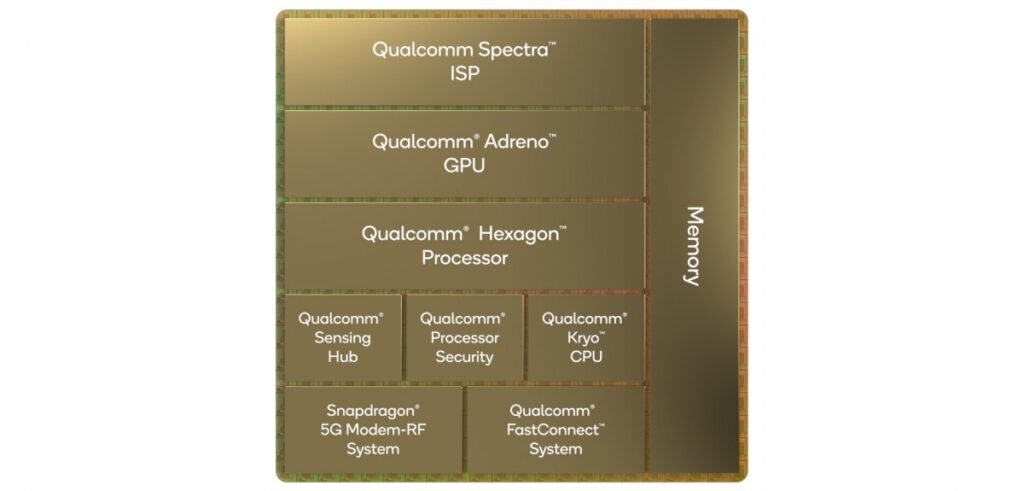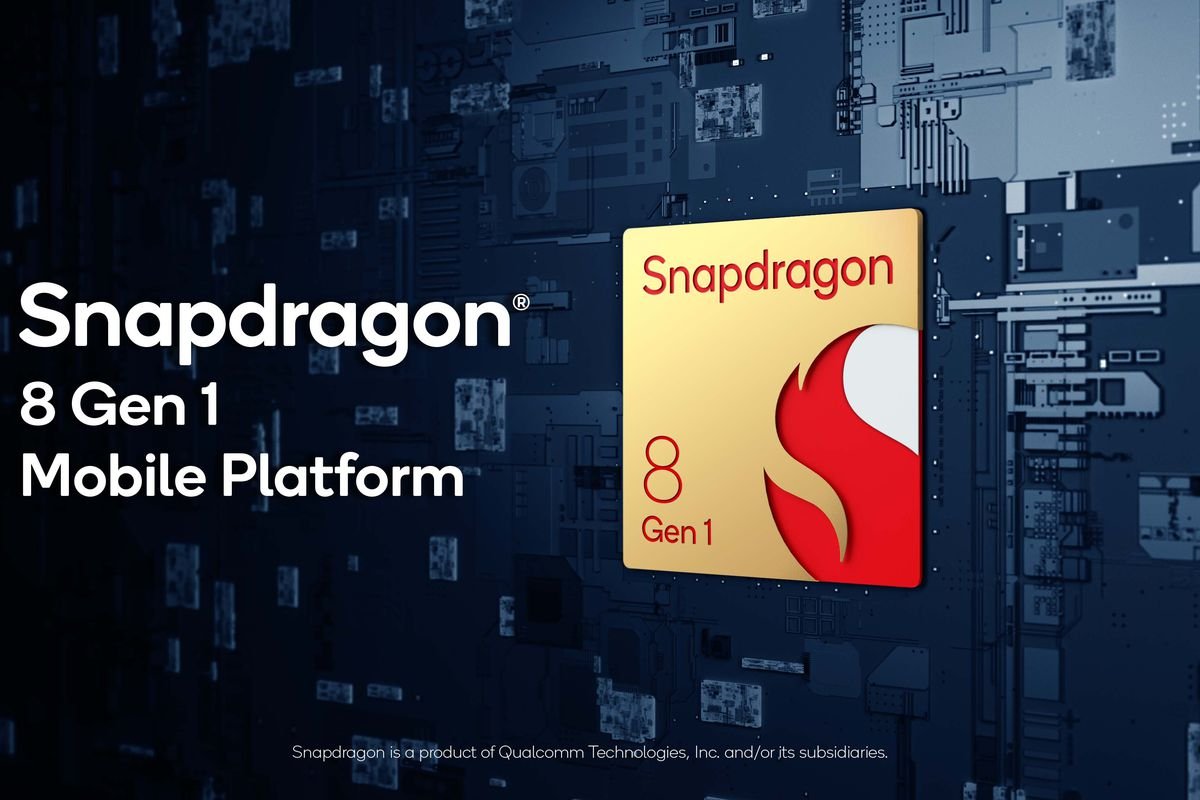Qualcomm has unveiled its next-generation flagship chipset for Android devices and it comes with lots of upgrades when compared to the previous-gen Snapdragon 888. As a first step, Qualcomm switches to a new naming scheme, it is now dubbed the Snapdragon 8 Gen 1, number for tier (8 = flagship and the generation. This made the talks of a Snapdragon 898 void. In this article, we’ll go through everything you need to know about the Qualcomm Snapdragon 8 Gen 1 chipset, its CPU, GPU, ISP, etc. Let’s get right into it.
CPU
The Snapdragon 8 Gen 1 is Qualcomm’s first 4nm chipset and is also the first to use the new gen ARMv9 CPU.

The CPU still comes with the three-cluster design like previous generations but the cores now have the ARMv9 designs. The prime core is a Cortex-X2 clocked at 3.0 GHz, the three performance cores are the Cortex-A710 clocked at 2.5 GHz and the four efficiency cores are the Cortex-A510 clocked at 1.8 GHz.
Thanks to these improvements, the new CPU will be 20% faster than the one in the Snapdragon 888 while also using 30% less power.
GPU
The Snapdragon 8 Gen 1 comes with a new Adreno that promises up to a 30% boost in performance whilst using 25% less power thanks to its new architecture. This GPU allowed Qualcomm to develop three Elite Gaming features so performance and power efficiency can be improved.
The first feature is the Adreno Frame Motion Engine. This allows the GPU to render a game at twice the frame rate whilst using the same amount of power. This makes it keep a stable FPS while using 50% less power.

The next new feature is Volumetric Rendering which uses desktop-class volumetric lighting for dramatic lighting effects in games.
The third and last feature is Variable Rate Shading Pro. This is an image-based VRS that should help with the integration of VRS into more games. For this, Qualcomm partnered with top game developers to make sure their games make the optimum use of this feature.
ISP (Snapdragon Sight)
The ISP of the Snapdragon 8 Gen 1 is now dubbed the Snapdragon Sight and it is single-handedly the most improved part of this chipset.
The Snapdragon Sight is an all-new 18-bit ISP which means it can capture more information from the sensor when compared to the 14-bit on the SD888. Thanks to the 18-bit ISP, there is an improvement in dynamic range with 4 additional stops so you get better HDR images. The chip can also export full 18-bit RAW images so professionals can work with all the data captured by the sensor.

This new ISP can now process 3.2 gigapixels per second which means that it can capture up to 240 12MP images per second (2X that of the SD888). When paired with a 108MP sensor, it can take full-res images 30 times in a second. If it is connected to three cameras simultaneously, it can take 30 3x36MP images per second. This will increase how many images you can take with burst mode in a short time as well as frame stacking.
The dedicated hardware to ultra-wide cameras also got improved. So whilst handling things like dewarping the image, it now also applies a filter to remove chromatic aberration.
There are also massive improvements in the hardware handling video recording. The ISP can now record 8K videos at 30 fps with HDR10 and HDR10+ support. Whilst recording the 8K video, it can do active Electronic Image Stabilization at the same time. Also, you can take 64MP images while recording 8K videos. These improvements in video recording also lead to better digital zoom while recording videos.
Just like Cinematic Mode on the new iPhones, Qualcomm has also included a hardware engine to render bokeh in videos at up to 4K. This is a great feature and I hope all OEMs utilize it.
As for night mode, there is now a dedicated Mega Multi-Frame Engine that can merge up to 30 frames into a single frame. This uses the same amount of time as the 6 frames merging in the previous generation.
Qualcomm has also partnered with Leica to develop software that matches the behavior of classic Leica lenses.
Artificial Intelligence is also embedded in the ISP so it can perform AI face detection with improved accuracy and speed. It can recognize and track up to 300 facial marks which is double what the previous-gen could do. This also improves the accuracy of 3D animoji avatars.

There’s a 4th ISP in the Snapdragon 8 Gen 1 but it is part of the 3rd-gen Sensor Hub, which enables always-on camera features. This allows new and faster face unlock modes as well as other privacy features. This fourth ISP has many uses as it can detect when you’re sharing your screen with others so the phone can silence incoming notifications. Also, it can detect when someone is spying on your phone from behind and lock your screen. These features make sure your privacy is protected from others.
However, three are lots of privacy concerns with an always-on camera and how it can be used negatively by some. So Qualcomm has some measures to prevent that, first, the ISP’s data will never leave the device and it is protected by new security features. Just like other new features, it is up to OEMs to utilize them and provide necessary controls to users.
AI

The Snapdragon 8 Gen 1 has a new AI engine that will be able to perform 4x more tasks with up to 70% higher power efficiency. This will help reduce the workload on the CPU and GPU as the AI engine can perform more tasks.
Network and Connectivity
As a start, Qualcomm has equipped the Snapdragon 8 Gen 1 with an integrated X65 5G modem which supports sub-6 and mmWave bands. This 5G modem can reach speeds of 10 Gbps which is a nice upgrade from the 7.5 Gbps of the previous gen.
For local connectivity, it comes with support for Wi-Fi 6 and 6E. It comes with improved Bluetooth connectivity like Bluetooth Audio LE and Broadcast Audio. This chip can stream CD Lossless Audio over Bluetooth LE to compatible devices. Stereo recording will also be supported as well as voice-back channels.
Security

Qualcomm has also worked to improve the security of the Snapdragon 8 Gen 1 by introducing the Trust Management Engine, which will stay below the hypervisor. The Trust Management Engine will remain secure even if the security zones above it get compromised.
This is all for now, but expect flagships powered by this new chipset to launch in the coming weeks before the end of the year. Motorola and Xiaomi seem to be leading the race for who will the first to use the Qualcomm Snapdragon 8 Gen 1.











